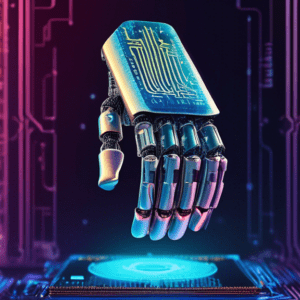The world of artificial intelligence (AI) is on the cusp of a significant shift as Arm, the renowned chip designer owned by Softbank, sets its sights on releasing its own AI chip in 2024. This move has the potential to reshape the AI landscape, introducing a new player into a field dominated by giants like Nvidia and Intel.
Arm’s Ambitions in the AI Chip Market
Arm’s foray into the AI chip market is a strategic move driven by the explosive growth of AI applications. From self-driving cars to advanced medical diagnostics, AI is rapidly transforming various industries, creating a surge in demand for specialized hardware capable of handling the complex computations involved.
While Arm’s current chip designs are ubiquitous in smartphones and other devices, their foray into AI signifies a new ambition. The company aims to leverage its expertise in energy-efficient chip design to create AI chips that can deliver high performance without compromising on power consumption. This focus on efficiency could be a game-changer, particularly for AI applications in edge computing and mobile devices where power constraints are paramount.
Competition and Challenges in the AI Chip Arena
Arm’s entry into the AI chip market is not without its challenges. The company faces stiff competition from established players like Nvidia, whose GPUs have become the industry standard for AI training and inference. Intel, another tech behemoth, is also heavily investing in AI chip development.
To carve out its space in this competitive landscape, Arm is banking on its reputation for energy-efficient designs and its vast ecosystem of partners. The company plans to leverage its existing relationships with chip manufacturers to bring its AI chips to market quickly and efficiently.
However, Arm will need to demonstrate that its AI chips can deliver the performance and capabilities necessary to compete with the likes of Nvidia and Intel. Winning over developers and gaining adoption within the AI community will be crucial for Arm’s success.
Potential Impact on the AI Landscape
The arrival of Arm’s AI chip has the potential to significantly impact the AI landscape in several ways:
Increased Competition and Innovation
The introduction of a new player like Arm will inject much-needed competition into the AI chip market. This competition could lead to accelerated innovation, pushing the boundaries of AI chip design and performance. As companies vie for market share, we can expect to see advancements in chip architectures, power efficiency, and overall capabilities.
More Choices for AI Developers
With Arm’s entry, AI developers will have more choices when selecting the hardware for their projects. The availability of different AI chip options with varying strengths and weaknesses will allow developers to choose the best fit for their specific applications and requirements.
Growth of Edge AI
Arm’s focus on energy-efficient AI chips could be a boon for the burgeoning field of edge AI. Edge AI involves deploying AI algorithms on devices at the edge of the network, closer to the data source. This approach reduces latency and enhances privacy but often requires power-efficient hardware. Arm’s AI chips could provide the ideal solution for powering these edge AI applications.
The Road Ahead for Arm’s AI Ambitions
The release of Arm’s AI chip in 2024 marks a pivotal step in the company’s journey. Its success hinges on several factors, including the performance of its chips, its ability to attract developers and partners, and its strategic positioning within the rapidly evolving AI landscape.
As Arm navigates this new territory, the industry will be watching closely to see if its AI ambitions can translate into a successful challenge against the established giants of the AI chip market. The outcome of this endeavor could shape the future of AI computing for years to come.
